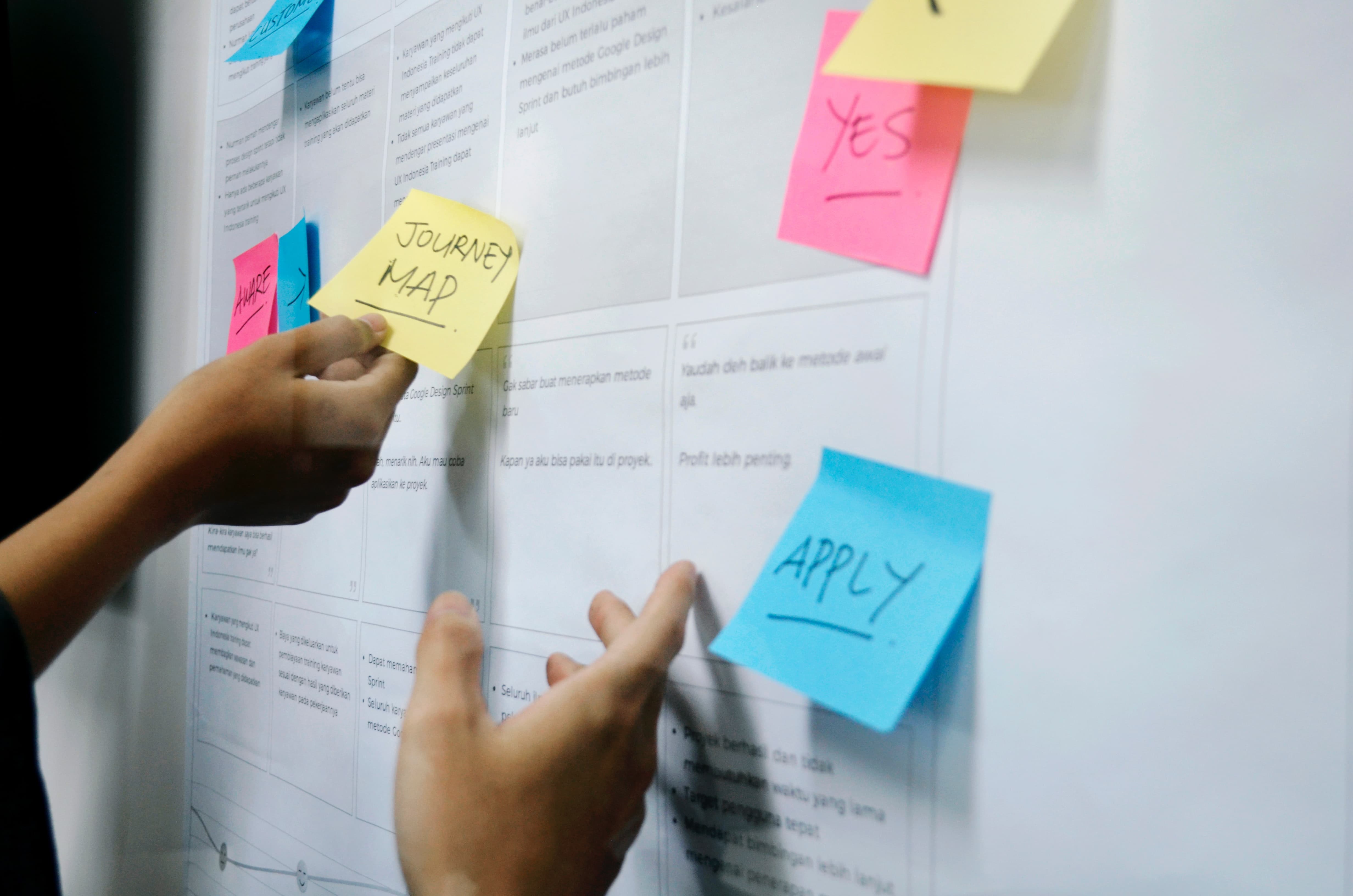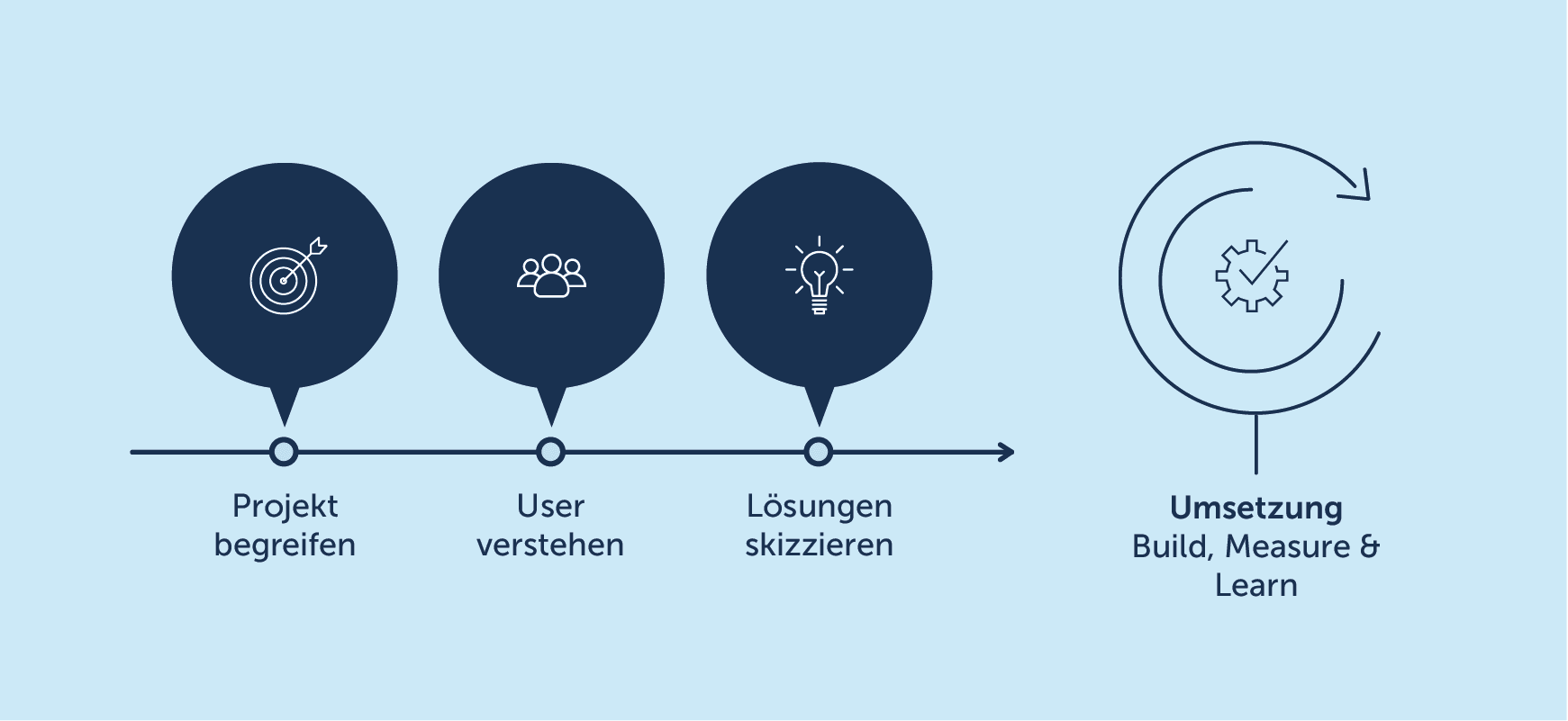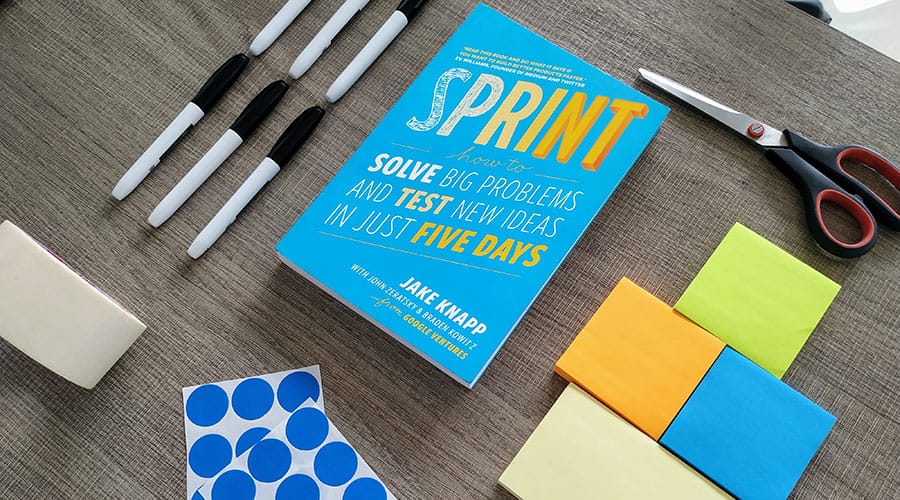Inception process – our way of working
Our inception process for new projects with the help of design workshops
by Philipp Brunner
27.03.2020

We want to understand your business and your customers. With this knowledge, we can best support you in creating digital products with high value for your target groups.
dmcgroup is a design and digital agency. We understand design holistically. The aim of our work is not just to create beautiful design, but to create functioning products and services for our customers’ customers.
We want to understand exactly what makes your company tick and which customer segments you serve or have in mind: What tasks and problems do your customers face? What solutions does your product offer for this?
First of all, we want to understand your customers’ problems precisely so that we can work with you to find the best possible solution. We want to be your partner in product development.
The following steps help us to achieve the desired goal with a design workshop in large projects:

Design workshop – Step 1: Understanding the project
Collaboration should begin with defining the playing field and finding a common language.
That’s why we take the time to explore and define the project landscape together with you in the first design workshop:
- Getting to know each other
- Identify relevant stakeholders and dependencies for the project
- What is the vision at the heart of the project?
- What are the success criteria for the project?
- What are the opportunities and risks of the project?
- Inspiration and insights – what role models or “benchmarks” can we find?
The result: a shared understanding of the basic parameters of the project and getting to know each other in the project team.

Learn
more
We are happy to support you with our decades of expertise in the development of digital products and services. A design workshop allows us to recognize potential together and get projects on track.
Ready for the next step?
Contact us and find out more about our process!
Design workshop step 2: Understanding users
Our (digital) products are successful because they serve needs and solve problems. It is therefore an essential part of our work to identify the needs and problems of (end) customers and users.
This is one of the main tasks at the start of the project. Ideally, we draw on data that can verify or falsify our assumptions: Analysis data, know-how of employees with customer contact, research results, …
However, even if these validations are missing (for the time being), the following steps provide valuable initial starting points:
- Identify your customer segments and profiles
- What “jobs” are customers trying to do?
- What problems and obstacles do they encounter?
- What benefits do they hope for or expect?
- Adopting the customer perspective and developing empathy
This is the result: answers to the questions “Who are we building the product for?” and “Why are we building the product?”

Design workshop – Step 3: Sketch and describe solutions
The analysis of customer segments and profiles creates the basis for outlining initial possible solutions.
A detailed look at the customer journeys of the individual customer profiles allows us to identify the path of these users step by step and thus also to arrive at initial work packages and a possible scope estimate:
- Identify typical user scenarios and customer journeys
- Derive product flow from customer journeys
- Definition of possible “value propositions” for customer profiles
Outline solutions and product features - Develop prototypes and evaluate ideas
- Prioritize features and plan work packages
The result: initial sketches and prototypes for the product, which make it possible to plan the rest of the project.
Design workshop – Step 4: Test and improve solutions
As soon as the project is outlined in sketches, we start with regular product development. Ideally, we rely on continuous, sprint-based development involving all relevant disciplines: Business analysis, conception, design, front-end and back-end.
The continuous review of hypotheses and prototypes and iterative improvement of the product (build, measure, learn) is central to every phase of implementation:
- Analysis, conception and interaction design
- (Further) development of prototypes and products
- Continuous user tests
- Analysis of tester knowledge
- Iterative improvement
The result: “Working software” in every sprint, iterative implementation of the project.
From the latest industry trends and the latest insights into AI and UX/UI design to exciting use cases.
Sign up for our monthly newsletter and stay up to date!
Stay
tuned
More articles